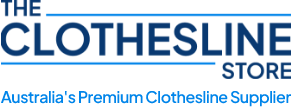
How to Remove Breast Milk and Baby Formula Stains from Clothing
Breast milk and formula stains can be a challenge for new parents, especially when they leave their mark on your favourite baby clothes, burp/wind cloths, or nursing pads.
Thankfully, with a bit of know-how and the right tools, you can eliminate these protein-based stains from your fabric. Whether you're dealing with fresh stains or the dreaded stubborn stains, we’ve got you covered.
Here’s everything you need to know to keep your clothes looking as fresh as the first wash. TABLE OF CONTENTS
Understanding the Problem: Why Milk Stains Stick
Breast milk and baby formula are both protein-rich liquids, which means they leave behind protein stains on fabrics. These stains can be tricky because, unlike other stains, they often bond deeply with fabric fibres.
If not addressed promptly, the proteins can set, making it harder to remove. The longer the stain persists, the more challenging it becomes to eliminate entirely, so it's best to act fast.
Pre-Treating the Stain
When you notice a fresh stain from breast milk or formula, it’s crucial to act quickly. First, rinse the stained garment in cold water to remove any excess milk or formula residue. Cold water works best at this stage because it prevents the protein from setting into the fabric.
If you use hot water, you might actually cause the proteins to bond further with the fabric fibres, making the stain even more stubborn.
Once the excess breast milk or formula is rinsed off, apply an enzymatic stain remover to the stained area. These types of stain removers work wonders on protein-based stains, as the enzymes break down the proteins and help lift the stain.
You can also use a gentle dish soap solution if you’re in a pinch – simply dilute the soap in water and blot the stain gently with a clean cloth.
For stubborn stains, leave the enzymatic stain remover on for about 10-15 minutes before proceeding with the wash.
 For really tough breast milk or formula stains, you may want to let the garment soak in a mixture of warm water and the stain remover for 24 hours. Be sure to check the garment before proceeding to the next step. If the stain persists, repeat the treatment or try a stronger stain-fighting option, like oxygen bleach.
For really tough breast milk or formula stains, you may want to let the garment soak in a mixture of warm water and the stain remover for 24 hours. Be sure to check the garment before proceeding to the next step. If the stain persists, repeat the treatment or try a stronger stain-fighting option, like oxygen bleach.
Washing and Rinsing
Once the stain is pre-treated, it’s time to wash the garment. Use your regular laundry detergents, but keep in mind that not all detergents are created equal. Opt for a laundry detergent that’s effective on protein stains. Some detergents have added enzymes to help break down the milk proteins during the wash.
Wash the clothes in cold water to prevent any proteins from binding to the fabric, and always follow the garment’s care instructions.
If you're washing baby clothes or burp cloths, it's a good idea to wash them separately from other items, as this will prevent cross-contamination of stains.
For stained clothes that are extra sensitive, you may want to consider a soft bristled brush to gently scrub away any remaining stain before the wash.
Drying and Final Touches
After washing, check to see if the stain has been completely removed. If any milk or formula marks remain, it’s best not to dry the garment in the dryer just yet, as the heat can set the stain permanently.
Instead, allow it to air dry or place it in direct sunlight to help naturally lift any remaining marks.
 If the stain has been stubborn and doesn’t seem to budge after the first wash, repeat the process. Soak the garment in cold water and a stain remover before washing again.
If the stain has been stubborn and doesn’t seem to budge after the first wash, repeat the process. Soak the garment in cold water and a stain remover before washing again.
Sometimes, a second treatment is all it takes to eliminate the last traces of those pesky breast milk stains or formula stains.
Use Stain Removal Wipes for Quick Clean Ups
When you're in need of a quick clean up, especially with little ones, stain removal wipes are a fantastic solution.
Keep a pack of these wipes on hand for on-the-go cleanups. Simply blot the stained area gently and let the enzymes in the wipe do their job.
Be sure to test the wipes on an inconspicuous area of the fabric to ensure they won’t damage the material.
Extra Tips to Tackle Tough Stains:
Soak in Oxygen Bleach
For protein stains that just won’t budge, soaking the garment in a solution of oxygen bleach can be a game changer. Just follow the instructions on the bleach container, and let it sit for an hour or more.

Use a Sponge
If there’s still a visible stain, try using a sponge and a mix of warm water and stain remover to gently rub the stain. Be sure not to rub too hard to avoid damaging the fabric.
Don’t Forget Burp Cloths
These absorb the most milk residue and can get pretty stained. Soak them in cold water before tossing them in the wash, and use a stain remover to help keep them fresh.
Read our article on the Hills Portable Clotheslines for Parents and Sleeping Bubs
Conclusion
With a bit of care, you can keep your baby clothes and burp cloths looking clean and fresh, free from the hassle of stubborn stains.
By acting quickly and using the right stain removers, you'll be able to tackle those breast milk stains and formula stains with ease.
Remember to use cold water initially, apply an enzymatic stain remover, and soak when necessary. With these tips, your clothes will be free of protein stains in no time!
So, the next time you find yourself facing a milk-stained garment, you’ll have the tools and knowledge to clean up the mess. Happy washing!





















